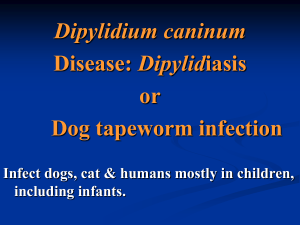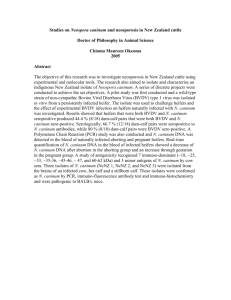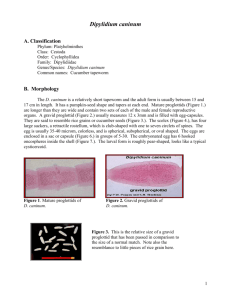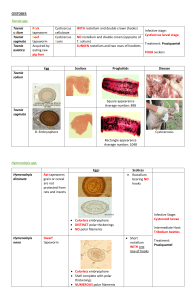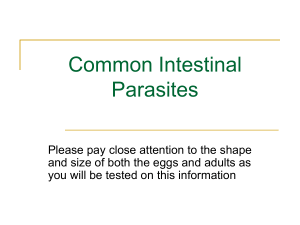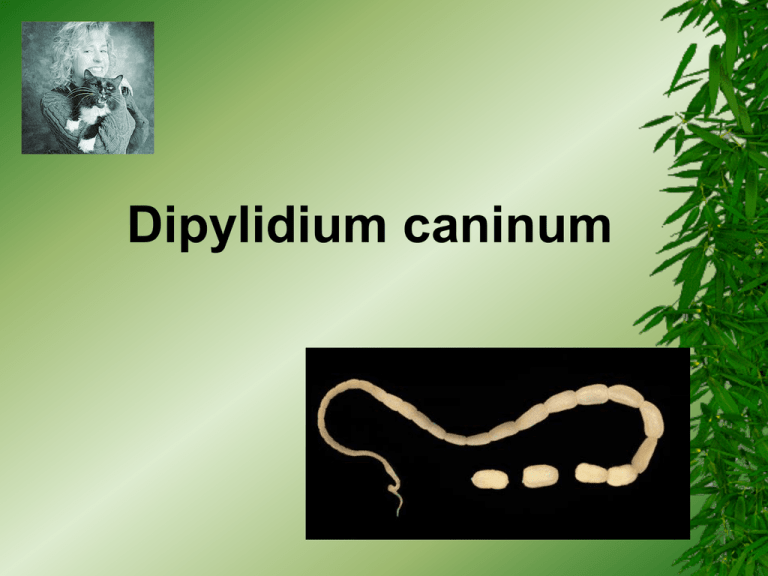
Dipylidium caninum
Dipylidium caninum is a tapeworm
that commonly infects dogs and cats.
And occasionally affects humans,
especially children. The first cases of
D. caninum in humans were discover
in 1903 with several cases in Europe
and one in the U.S.
-Common name: Dog or cat tapeworm; double-pored
dog tapeworm
-Name of disease: Dipylidiasis
-Final Hosts: Dogs, Cats, Humans
-Reservoir: unknown
-I.M.H.: larva of dog fleas (Ctenocephalide species)
Infective stage: cysticercoid for F.H & egg for I.M.H.
Incubation Period: approximately 20 days
Morphology
10-70 cm in length
Scolex:
- conical-shaped and has four
suckers. There is a rostellum
armed with several rings of small
hooks.
-provided with 15-30 of hooks
Segments(stroblia)
200) segments ,diagnostic
feature(pumpkin-seed shape).
they contain two sets of male and
female reproductive organs.
They therefore demonstrate two
genital pores that lead to their
name as the “double-pored”
gravid segments :contain egg capsule,
The number of eggs can range from 5 to
30. egg similar to egg of taenia spp.
(hexacanth embryo, embryophore, outer
membrane). The larvae of D. caninum
are known as cysticercoids because the
scolex is enclosed in a fluid-filled cyst at
this stage.
Life Cycle
Human Infection
Human infection are rare and normally restricted to
young children .
- Light infections of D. caninum often are
asymptomatic.
- Infection, however, can still cause abdominal pain,
diarrhea, and anal itch in some individuals.
Diagnosis
Examination of stool for characteristic segments and
eggs capsule (less common).
•Microscopy
• Eggs
Dipylidium caninum eggs are round to oval
and contain an oncosphere that has 6
hooklets. And present as egg capsule
contain 5 to 30 or more eggs .
segments
Dipylidium caninum segments have two genital
pores, one in the middle of each lateral
margin. They are pumpkin seed-shaped.
Ps
Scolex
The scolex of Dipylidium caninum is
conical-shaped and has four
suckers. There is rostellum armed
with several rings of small hooks.

